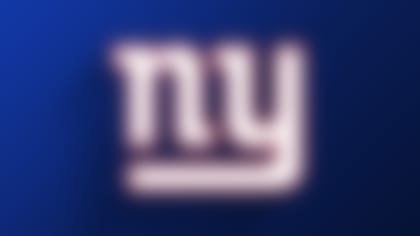The Seattle Seahawks win with a coach on his third stint in the NFL and who likes to give a seemingly endless amount of hugs and high-fives to his players.
They win with a roster that has gone through more changes than Lady Gaga.
They win with the league's 28th-ranked offense, 19th-ranked defense and 25th-ranked quarterback.
They win ugly more often than they win pretty.
But they win, enough to take sole possession of first place in the NFC West with a 4-2 record. Not bad for a team that managed only nine victories the previous two seasons.
Whether the Seahawks stay on their perch through the final 10 weeks of the schedule is what makes the path they've traveled worth closer examination.
And the first place to start is with the rah-rah approach of Pete Carroll, who spent nine seasons at the helm of USC before becoming the Seahawks' coach in January.
"It's very collegial," said former Ravens coach and NFL Network analyst Brian Billick, who worked the Seahawks' last two games as a color analyst for FOX. "But it's a mentality the players are buying into. Can you sustain that over a longer period of time? We'll see. But Pete is so consistent with his energy for it."
Carroll for Coach of the Year?
At 4-2, Pete Carroll has his Seahawks in first place in the NFC West, which has Bucky Brooks giving the coach some props in his Week 7 awards watch. **More ...**
Maybe that's a cause for concern, because Carroll pretty much is the same effusive, upbeat guy he was when he coached the New York Jets (1994) and New England Patriots (1997-99). After Carroll was fired from both jobs (even after twice leading the Patriots to the playoffs), the rap on him was that he was better suited for the collegiate ranks. He proceeded to prove as much by winning seven consecutive Pac-10 titles, two national championships and compiling a 97-19 record with the Trojans.
When it comes to assessing Carroll, every conversation begins with a coaching philosophy that isn't quite the same as what is commonly found in the NFL. For instance, he saw to it that, throughout the Seahawks' training facility, there are signs that say, "I'm In." They can be seen entering and exiting the locker room, the weight room and on the way to the practice field.
This is one way that Carroll reminds his players, as well as everyone else in the organization, that in order for the program he has put in place to work, everyone must embrace it to the fullest.
Then there was the basketball hoop he had installed next to team headquarters. And the music, mostly hip-hop, that was blaring during training camp. And the bopping in and out of offensive, defensive and special teams meetings just to let everyone know that, despite his defensive roots, he's in touch with all aspects of the team.
The hugs, the high-fives and those constant words of encouragement that he gives in one-on-one meetings, with even the lowest members of the squad, round out a picture of a coach who values staying closely connected with his players.
Oh, yes, and there are Carroll's efforts to coach the fans. He is one of the few NFL coaches who regularly delivers messages via Twitter. A couple from this week were aimed at generating more excitement at Qwest Field, even though the Seahawks are going to be on the road Sunday:
Hey 12th man, you all are extraordinary ... but how much crazier can we make Qwest? what can we do to raise the bar??
12th man, what do you think about a song to play at Qwest for after we score or get a turnover? any suggestions??
Carroll's players insist that there is a whole lot more to him than that.
"People need to see and just understand that he's an excellent coach," safety Lawyer Milloy said this week as the Seahawks prepared to face the Oakland Raiders. "That's the one thing that's not talked about enough."
That, in essence, is the only thing that should matter to a 15-year veteran such as Milloy and to most other players in the NFL. All of that emotional stuff might have been OK when they were in college and high school, but now it's all about doing and maintaining a job in one of the least secure businesses on the planet.
"What professional players want is a coach who can help them," former NFL coach and NBC's "Football Night in America" analyst Tony Dungy said. "Does he know what he's doing? Does he know what he's talking about? They see through that very quickly, no matter how you are -- whether you're tough, rough, mean, or whether you're a nice guy.
"Pete Carroll knows what he's doing. (Players know) he can help me, whether he's hugging me or high-fiving me on the sidelines or what. When I come off the field, and he says, 'Hey, you need to do this, this, and this,' I can take that to the bank. That's what professional players want."
Still, Carroll is always looking to give them something more. He subscribes to the philosophy of the late John Wooden, the UCLA college basketball coaching legend who believed that creating the strongest internal competition possible was more important to success than preparing for what an opponent would do during a game.
That is why Carroll's in-season calendar begins with "Tell the Truth Monday," where the team focuses on critical self-evaluation from the previous day's game. After the usual day off Tuesday, there is "Competition Wednesday," with a high-tempo practice that emphasizes players competing with each other in workouts. "Turnover Thursday" speaks for itself, as does "Friday Review." The preparation ends with "Perfect Saturday," meaning that all that has been done on the practice field should, theoretically, end with perfect execution the day before the game.
"The biggest part of it is the way you practice," Billick said. "In college, you tend to be a little more physical, practices are longer, and you compete a lot more. The theory (of "Competition Wednesday") is great, but with a 20-game season (counting the preseason) and postseason and veteran players and older bodies, there comes a point where you've got to reevaluate that a little bit because you may be asking too much of them physically."
So far, most of what Carroll and new Seahawks general manager John Schneider have done has worked well. And that is saying plenty, considering that, since the coaching staff was put together in early February, the Seahawks have made more than 220 transactions. Among them were notable moves that came right before the start of the regular season, and even after the season began.
"The number of transactions, quite honestly, it wasn't something that anybody was keeping track of until somebody said something," Schneider said. "I knew we were making a lot of moves, but if our coaches felt this guy wasn't going to fit, we tried trading him, and then we worked the trade as much as we could. Or we tried to trade for a player that could fit us. We wanted a roster as big and as fast as it could possibly be. Philosophically, we both have active minds, just being kind of aggressive and always pushing the envelope."
The rest of the league took notice. At first, the common reaction was, "Are Carroll and Schneider out of their minds?" Or, to be more precise, "Are they capable of making up their minds?"
"My initial reaction when I went to study them is, 'This is ridiculous. Come on, now. Let's focus yourselves. You don't need all of these transactions,'" said former NFL safety and FOX color analyst John Lynch, who will be working his second Seahawks game Sunday. "I said, 'There can't be rhyme and reason. They've just got to be throwing darts.' But now you see what's on the field and there is a lot of rhyme and reason. It was all about competition. They wanted to bring in as many different players that they felt fit their system, and let them go out there and compete and only the strong would survive."
The revolving door of players entering and exiting the building has made for plenty of discomfort, although that was part of the desired result.
"At times, as a player, it's an awkward feeling," Milloy said. "You have guys that have bought into the system, worked hard in the offseason and in training camp, and they're not with you. But between Schneids and Pete, they have their visions and they're willing to go out and make these changes for the betterment of the team."
The best move of all was signing one of Carroll's former USC wide receivers, Mike Williams, who is making a remarkable comeback after being out of football for two years. He leads the Seahawks and is tied for 12th in the NFC, with 32 receptions for 348 yards and a touchdown.
The most recent acquisition also paying dividends is trading for former Buffalo Bills running back Marshawn Lynch. For a fourth-round pick and a sixth-rounder (that could become a fifth), the Seahawks added a desperately needed large, physical inside presence to complement the outside speed of Justin Forsett.
Despite the signing of Williams, no one could accuse Carroll of playing favorites. He picked up another former Trojan, running back LenDale White, during training camp. White proceeded to fumble three times in practice. He was cut the next day.
In the end (or as much as one can say that with Carroll and Schneider), the Seahawks finished with a tough-minded team that can overcome mistakes, as was frequently the case in the Week 7 victory against Arizona. It is, most people in and out of the team believe, a far stronger unit mentally than in the past two seasons, when the Seahawks would routinely crumble in the face of adversity.
Although the defensive statistics might not be overwhelming, the unit has been solid.
"They're playing some very good, to even dominant, football on the defensive side of the ball," Lynch said.
One of the major questions, of course, is whether the Seahawks can continue to perform well enough to win one of the weakest divisions in the league. Carroll has insisted that he isn't working on a long-term building plan. He has said all along that he intended for the Seahawks to be exactly what they are so far -- a contender.
Carroll's influence figures to go a long way toward determining whether that will hold up through the balance of the season.
"When I talked with Pete the first time we had him (when the Seahawks faced the Rams), I know he believes that he's a completely different guy than the guy that had the opportunity with the Jets and with the Patriots," Lynch said. "And the biggest distinction is that now he has a clear vision, a clear understanding in his mind of how you go about building a winner."
Said Dungy: "Pete has changed the mindset out there. Those guys believe in each other. They are playing solid, they're playing sound. And that's what you have to get done, whether it's demonstrative, whether it's stoic, whether it's excited. It's getting people to believe and doing things the right way. And that's certainly what they have going right now."
Follow Vic Carucci on Twitter @viccarucci.




